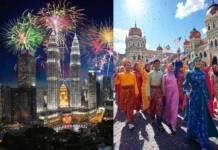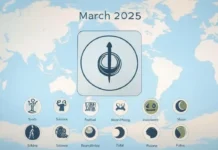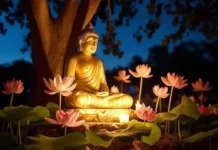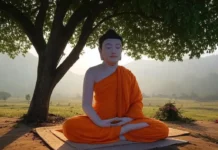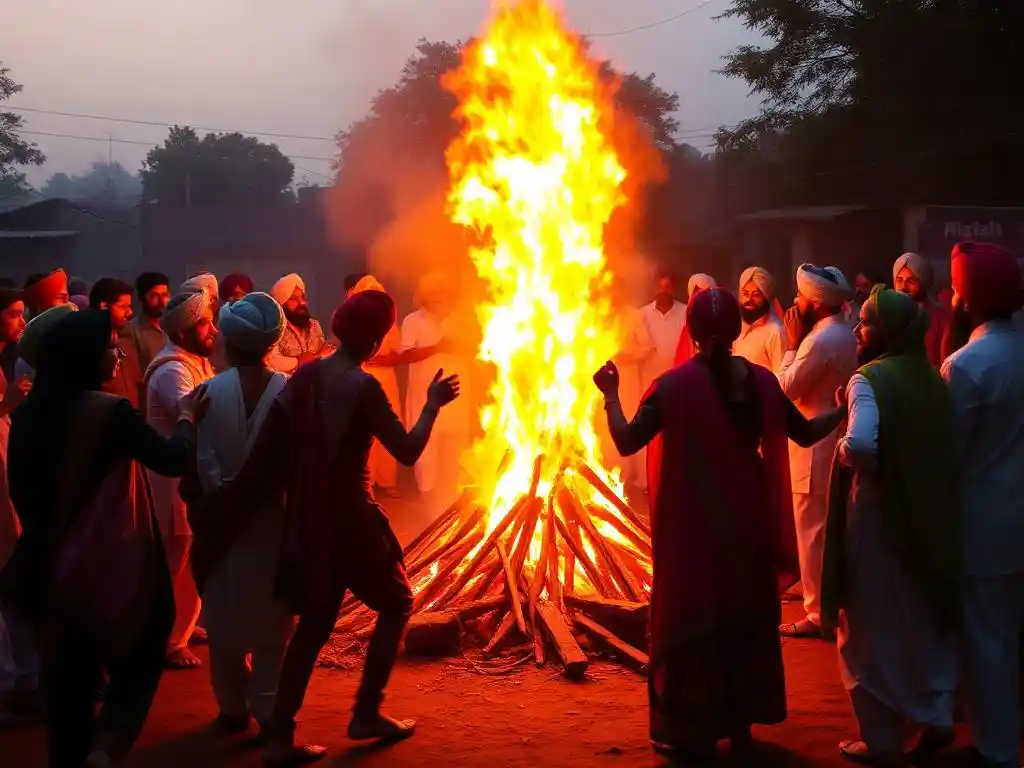
Lohri is a lively and colorful festival celebrated primarily in India, especially in Punjab, to mark the harvest season. It falls every year in January and is considered one of the most joyful occasions, with people coming together to celebrate the end of winter and the arrival of the harvest season. The festival is especially significant for farmers as it is a way of expressing gratitude for a good harvest. Along with the agricultural significance, Lohri is marked by vibrant traditions, including bonfires, folk music, dancing, and feasting. The festival is rooted in the cultural traditions of the region and brings together communities in celebration, sharing warmth, joy, and a sense of togetherness.
In this article, we will explore the history, importance, and celebrations of Lohri, along with some interesting facts about the festival.
Key Details
| Details | Information |
|---|---|
| Date & Day | January 13, 2025 (Monday) |
| Theme (if applicable) | Celebrating the harvest and new beginnings |
| Organizing Body | Cultural and Regional Communities |
| Type of Observance | Regional (Mainly in India, especially in Punjab) |
| Best Hashtags | #Lohri2025 #LohriFestival #HarvestCelebration #BonfireFun |
History and Origin
Lohri has its roots deeply embedded in ancient agricultural traditions. It is celebrated primarily in the northern states of India, particularly in Punjab, Haryana, and Himachal Pradesh. The festival is linked to the winter solstice, as it marks the end of the harsh winter and the beginning of longer days. Traditionally, Lohri was a celebration of the harvest of the Rabi crops, such as sugarcane, wheat, and barley.
The origins of Lohri are also tied to various mythological and folk tales. One of the most popular stories is of Dulla Bhatti, a folk hero in Punjab, who is said to have rescued girls from being forced into slavery and helped the poor. His bravery and generosity are celebrated during Lohri, with songs sung around the bonfire recounting his heroics. The festival thus symbolizes hope, prosperity, and the triumph of good over evil.
Importance and Objectives
Lohri holds immense cultural and social importance in India. It is not just a harvest festival but also a time to celebrate community bonding. The festival fosters a sense of unity, as people from various walks of life come together to mark the occasion.
- Agricultural Significance: Lohri is a way for farmers to show gratitude for a bountiful harvest.
- Cultural Identity: The festival strengthens the cultural identity of regions like Punjab, connecting people with their roots and traditions.
- Community Engagement: Lohri encourages community participation through dancing, singing, and feasting, creating a joyous atmosphere.
The objective of the festival is to bring communities together and celebrate the blessings of nature and the harvest.
How It Is Celebrated
Lohri celebrations are known for their vibrant atmosphere. The primary feature of the festival is the bonfire. People gather around a large fire, often lit in open fields or in front of their homes, symbolizing the warmth of the sun and the victory of light over darkness. The fire is fueled by wood, sugarcane, sesame seeds, and other offerings, which are thrown into the flames.
Traditional Dances and Songs: Folk dances like Bhangra and Gidda are performed around the bonfire, with participants wearing traditional clothes and singing festive songs. The songs often narrate stories of folklore, particularly of Dulla Bhatti, and are an integral part of the festival.
Feasting and Sweets: During Lohri, people prepare and enjoy a variety of traditional foods, particularly sweets made from sesame seeds and jaggery, such as tilgul. These sweets are not only delicious but are also considered auspicious for the festival. Families and communities gather to share these treats, strengthening bonds.
Fireworks: In some places, fireworks are set off as part of the celebration, adding an extra layer of excitement and festivity to the night.
Regional Variations: While the celebration is most famous in Punjab, the way it is celebrated varies across India. In some regions, it’s combined with other harvest festivals like Makar Sankranti, while in others, it’s observed on a smaller scale but still with great enthusiasm.
Interesting Facts
- Significance of Sesame Seeds: Sesame seeds are considered auspicious during Lohri, symbolizing health and prosperity.
- Lohri for Newlyweds and Babies: In some regions, Lohri is celebrated as a special occasion for newlywed couples and newborns, with prayers and blessings for their well-being.
- The Bonfire’s Role: The bonfire is not just a symbol of warmth; it represents the energy of the sun and is believed to purify the surroundings.
- Lohri & Winter Solstice: Lohri marks the end of winter in India, with the sun starting its northward journey after this day.
- Community Celebrations: In rural areas, Lohri is celebrated in open fields, with large gatherings of people joining in the celebration.
Quotes or Messages
- “Let the warmth of the Lohri fire light up your life with joy and prosperity.”
- “Wishing you a harvest of happiness, good health, and success this Lohri!”
- “May the spirit of Lohri bring you peace, love, and prosperity in the coming year.”
Conclusion
Lohri is a festival that not only celebrates the agricultural wealth of India but also brings people together to enjoy the warmth of community. It is a day filled with joy, tradition, and the promise of new beginnings. Whether you’re participating in a bonfire or simply enjoying the festive sweets, Lohri connects us all to the rhythm of nature and the culture of India.
If you enjoyed learning about Lohri, we encourage you to leave a comment below and share how you celebrate this festival. Join our WhatsApp Channel for more exciting updates on important days or explore other related content on our website!




